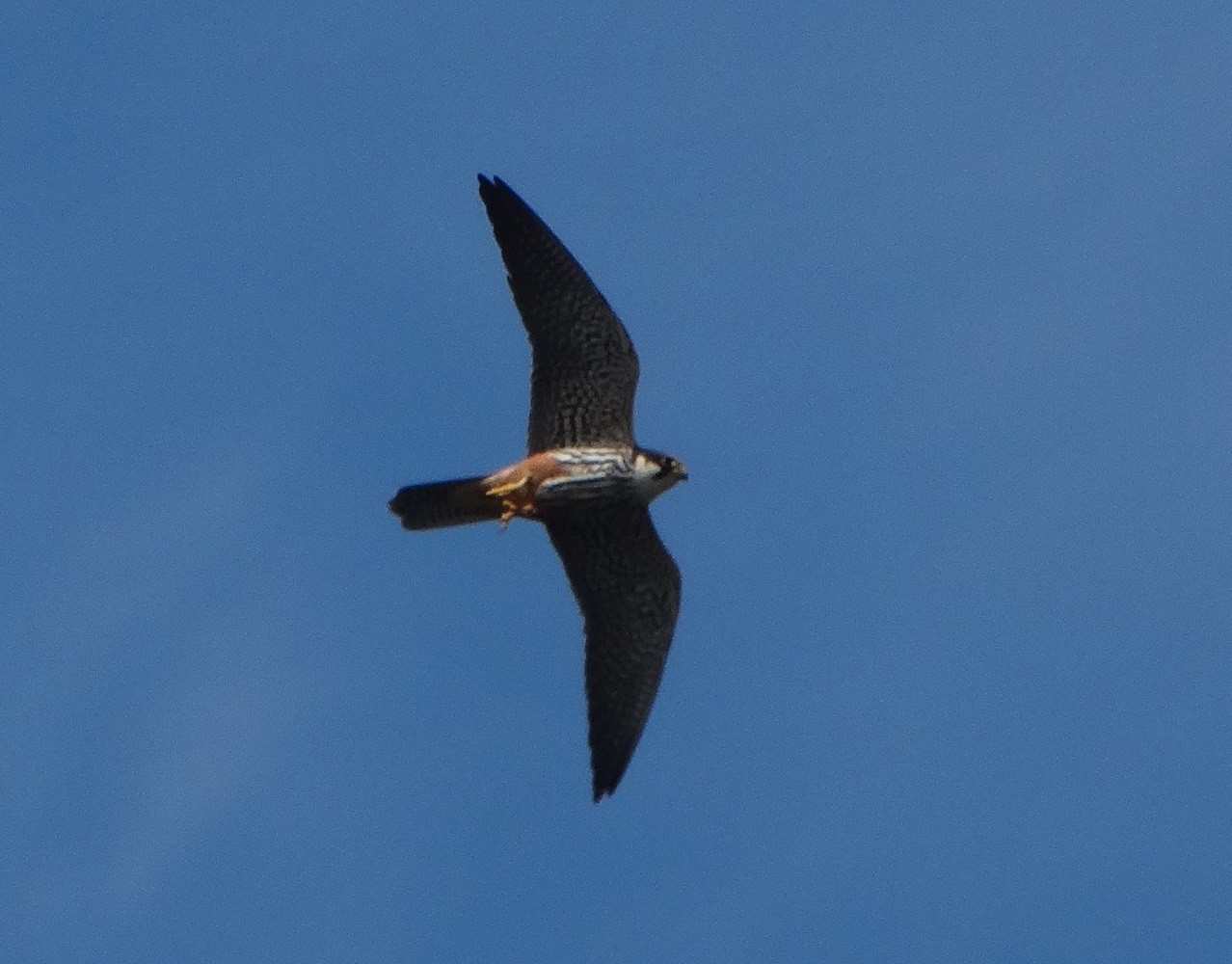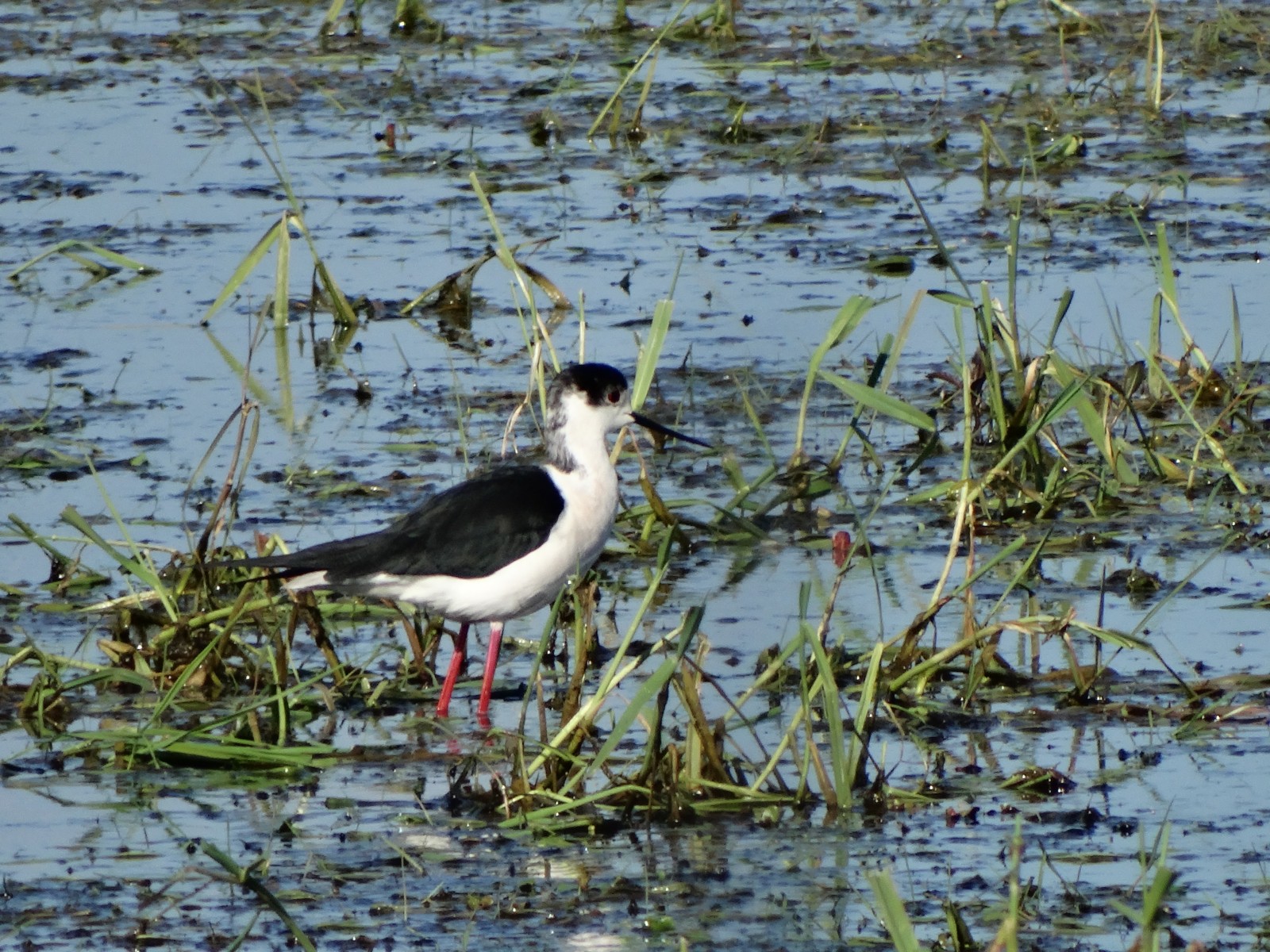Description
Marais de Petit-Mars is located on the left bank of the Erdre (river) and 25 km north of the city of Nantes The peaty marsh of Petit Mars is home to many species of birds during nesting, wintering and migration periods. Despite its limited accessibility, some spots allow beautiful observations.
Several species have found quiet areas to settle there. Like žličarka. The marsh hosts some nesting raptors such as črni škarnik, rjavi lunj and škrjančar. But also several species of passerines as bičja trstnica, srpična trstnica and trstni strnad.
During the winter several ducks are observable: žličarica, dolgorepa raca, žvižgavka, konopnica and sivka. And many priba and zlata prosenka rest and feed on wet meadows.
A site not to be missed in Loire Atlantique, while respecting the rules of good conduct in nature and the rights of private owners of certain areas of the marsh.
_________________________
Français: Marais fragile abritant une biodiversité abondante. Zone d'importance pour l'hivernage des oiseaux d'eau et la nidification de plusieurs espèces d'oiseaux. Situé sur la rive gauche de l'Erdre (rivière) et à 25 km au nord de la ville de Nantes, le marais tourbeux de Petit Mars abrite de nombreuses espèces d'oiseaux en période de nidification, d'hivernage et de migration. Malgré son accessibilité restreinte, quelques spots permettent de belles observations orntihologiques et naturalistes.
Plusieurs espèces ont trouvé des zones de quiétude pour s'y installer. Notons la présence régulière de la quasi totalité des espèces d'ardéidés de Loire Atlantique (10 espèces) dont l'emblématique žličarka . Le marais héberge quelques rapaces diurnes nichueurs tel que le črni škarnik, rjavi lunj et škrjančar . Mais aussi plusieurs espèces de passereaux dont certains paludicoles viennent se reproduire au sein des quelques roselières du marais ou s'arrêtent pendant quelques jours en halte migratoire tel que le bičja trstnica, la srpična trstnica et le trstni strnad.
En période d'hivernage, plusieurs centaines d'anatidés sont observables : žličarica, dolgorepa raca, žvižgavka, konopnica et sivka. Et de nombreux priba et zlata prosenka se reposent et se nourrissent au niveau de prés humides.
Un site à ne pas louper lors de vos balades naturalistes en Loire Atlantique, pour tous ornithos et naturalistes passionnés, tout en respectant les règles de bonne conduite dans la nature et les droits des propriétaires privés de certaines zones du marais.
Details
Access
The spots are accessible by car and bicycle. From the town of Sucé / Erdre (south), take the D178 towards Petit-Mars.
1st place: Follow the directional signs for the localities along the D178, then take the path on the left (La Rivière, near the Bank). The observation can be done along this narrow path (to the sites of Fresnes and Paulière).
2nd place: Continue along the D178, then turn left at a place called Le Grand Pâtis (equestrian center). You can park your car near the equestrian center, taking care not to disturb anyone. You can then take a small path to the peat extraction activity area on foot.
3rd place: Still on the D178, before arriving in the center of Petit-Mars, take the 3rd exit at the first roundabout (after a garage) in the direction of Vieux Bourg, La Guibretière. Follow the chemin de la Robinière then La Guibretière. Park your car along a small narrow path (agricultural path slightly to the left). Close your doors gently to avoid disturbing the birdlife too much. Then continue on foot along this path where you have access to large wetlands (open wet meadows) of the marsh.
_________________________
Français: Les spots sont accessibles en voiture et à vélo. Depuis la ville de Sucé / Erdre (sud), prendre la D178 en direction de Petit-Mars.
1ère place: Suivre les panneaux directionnels pour les localités le long de la D178, puis prendre le chemin à gauche (La Rivière, près de la Banque). L'observation peut se faire tout au long de ce chemin étroit (jusqu'aux sites de Fresnes et Paulière).
2ème place: Continuez le long de la D178, puis tournez à gauche au lieu-dit Le Grand Pâtis (centre équestre). Vous pouvez garer votre voiture près du centre équestre, en prenant soin de ne déranger personne. Vous pouvez ensuite emprunter un petit sentier jusqu'à la zone d'activité d'extraction de tourbe à pied.
3e place: Toujours sur la D178, avant d'arriver dans le centre ville de Petit-Mars, prendre la 3e sortie au premier rond-point (après un garage) en direction de Vieux Bourg, La Guibretière. Suivez le chemin de la Robinière puis La Guibretière. Garez votre voiture le long d'un petit chemin étroit (chemin agricole légèrement à gauche). Fermez doucement vos portes pour éviter de trop déranger l'avifaune des lieux. Continuez ensuite à pied le long de ce chemin où vous avez accès à de grandes zones humides (prairies humides ouvertes) du marais.
Terrain and Habitat
Wetland , Forest , Mud flats , Grassland , Reedbeds , River , Scattered trees and bushesConditions
Flat , High water possible , Open landscapeCircular trail
YesIs a telescope useful?
YesGood birding season
Spring , WinterBest time to visit
SpringRoute
Narrow trail , Unpaved roadDifficulty walking trail
Average walkAccessible by
Foot , Bicycle , CarBirdwatching hide / platform
NoExtra info
Please respect the tranquility of the place and stay on public roads.
_________________________
Français: Merci de respecter la tranquilité des lieux et de rester sur les chemins publics.



.jpg)


